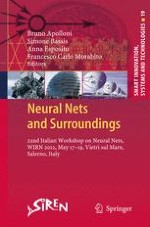This volume collects a selection of contributions which has been presented at the 22nd Italian Workshop on Neural Networks, the yearly meeting of the Italian Society for Neural Networks (SIREN). The conference was held in Italy, Vietri sul Mare (Salerno), during May 17-19, 2012. The annual meeting of SIREN is sponsored by International Neural Network Society (INNS), European Neural Network Society (ENNS) and IEEE Computational Intelligence Society (CIS). The book – as well as the workshop- is organized in three main components, two special sessions and a group of regular sessions featuring different aspects and point of views of artificial neural networks and natural intelligence, also including applications of present compelling interest.
